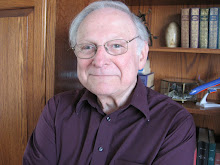The dining room of a de luxe American hotel, into which I inadvertently stumbled, advertised in engraved script on a gold-colored placard that between the hours of 3:00 and 5:00 p.m. it would serve “Royal High Tea.” Scholarly research insisted that I find out precisely what this enticing afternoon refreshment was, and it turned out to be an astonishing array of food and beverage that included a pot of tea (Indian, Chinese, Earl Grey, or herbal); thin, crustless sandwiches of cucumber-and-butter, ham-and-butter, smoked-salmon-and-butter, and (surprise!) prosciutto-and-butter; five kinds of cake (fruit, sponge, pound, chocolate, and an unidentifiable grayish one); cream puffs; chocolate éclairs; and—the pièce de résistance—scones studded with raisins and slathered with whipped cream and strawberry preserves—all served from tiered stands onto fine china by a cadre of white-gloved waiters in gold-braided epauleted uniforms.
When I attended an English university many, many moons ago, I frequently enjoyed High Tea. It wasn’t described as “royal,” however, and it usually consisted of a cup of tepid tea with milk, a hard fried egg, chips, baked beans on toast, and bangers (that’s what British sausages are called, owing to their high water content that often makes them explode when cooked).
Why the difference between the “royal” American high tea and my rather more commonplace English high tea? It stems from a misinterpretation (guess by whom) of the word high.
High, a word that we got, of all places, from Lithuania (kaukaras, “hill”), has taken on a versatile range of meanings, including “lofty, expensive, tipsy, rotten, malodorous, forcible, extreme, shrill, loud, serious, abstruse, and liturgically elaborate,” but the two meanings that have confused American tea-sippers are “principal” and “luxurious.”
Tea, in England, is not only a drink, but also a light meal, which typically includes bread and butter, biscuits (cookies), and, if you’re lucky, cake, crumpets, or scones. This ordinary afternoon tea differs from “high tea” (so-called at least since 1831), which is a principal meal, specifically one that includes meat, and is eaten in the late afternoon, taking the place of both afternoon tea and dinner. Americans might call it supper. High tea is probably not often served at Buckingham Palace, and the phrase “royal high tea” I expect would strike most Britons as an absurdity.
The Bard of Buffalo Bayou also strikes Britons as an absurdity (as he found out when he tried to strike several Britons). In days of yore, he used to recite this poetic confection filtered through his tea-stained mustache:
When you’re in old Blighty,
And you’re feeling down,
Be sure to take High Tea
To banish that frown.
And when you take High Tea,
If you spill on your dhoti,
Just say, “Well, all righty,
I guess I’ll have Low Tea.”

No comments:
Post a Comment